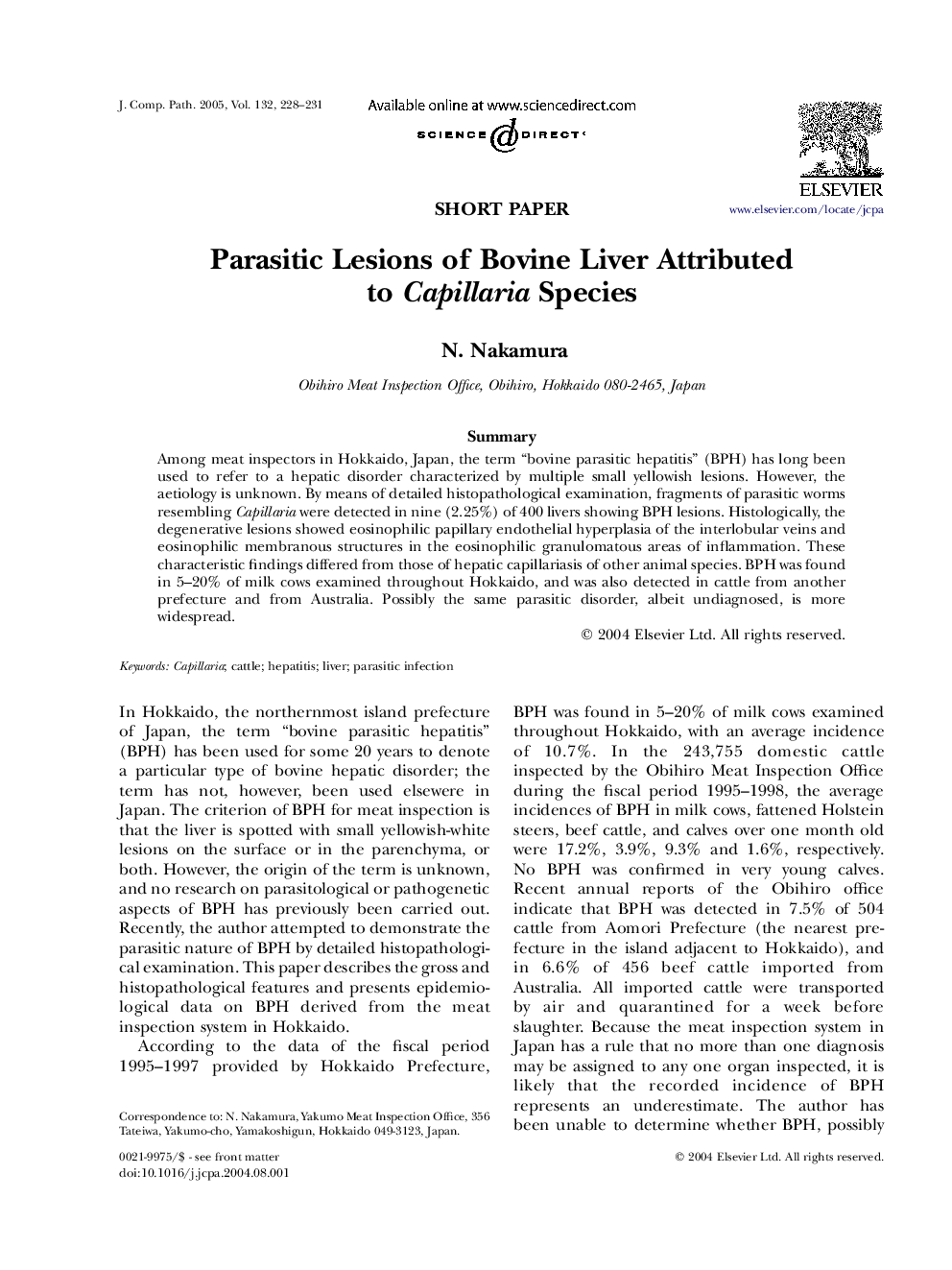| Article ID | Journal | Published Year | Pages | File Type |
|---|---|---|---|---|
| 8980819 | Journal of Comparative Pathology | 2005 | 4 Pages |
Abstract
Among meat inspectors in Hokkaido, Japan, the term “bovine parasitic hepatitis” (BPH) has long been used to refer to a hepatic disorder characterized by multiple small yellowish lesions. However, the aetiology is unknown. By means of detailed histopathological examination, fragments of parasitic worms resembling Capillaria were detected in nine (2.25%) of 400 livers showing BPH lesions. Histologically, the degenerative lesions showed eosinophilic papillary endothelial hyperplasia of the interlobular veins and eosinophilic membranous structures in the eosinophilic granulomatous areas of inflammation. These characteristic findings differed from those of hepatic capillariasis of other animal species. BPH was found in 5-20% of milk cows examined throughout Hokkaido, and was also detected in cattle from another prefecture and from Australia. Possibly the same parasitic disorder, albeit undiagnosed, is more widespread.
Related Topics
Life Sciences
Agricultural and Biological Sciences
Animal Science and Zoology
Authors
N. Nakamura,
